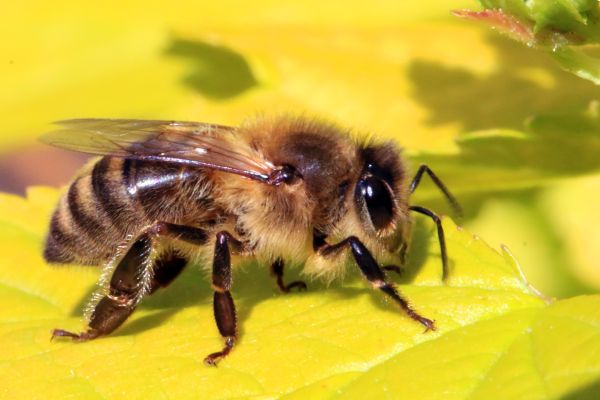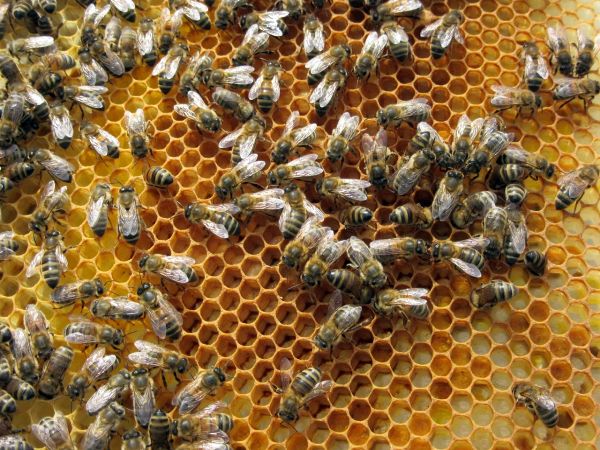Celebrate Bee Day With These 4 Amazing Facts About Bees
- Details
- Written by Arielle Tiangco

May 20th is Bee Day! So, to celebrate our fabulous pollinating friends, here are four facts that go beyond their all-important role in plant cross-fertilization.
Females are the future
Female bees have different jobs depending on the species, but in all communities, female bees play essential roles that secure the survival of the entire colony.
Social bee species, for instance, need their females to find nesting spots and establish new colonies by laying hundreds of eggs there. Solitary bee species, on the other hand, need their females to create segmented nests, lay an egg in each segment, make sure to leave a ball of pollen that will feed the larva, and once their important work is done, they die.
Female bees have a lot on their shoulders, so they need as much support as they can get, especially early in the year when foraging options are sparse. “It’s best to provide female bees with many early spring flowers—they rely on nectar from flowers to fuel their search for a nesting spot,” explains doctoral student Lila Westreich. “Planting early-flowering plants such as willow, poplar, cherry trees, and other spring blooms provide nectar for queen bees.”
Some bees are curious, others are focused
Just like us, bees have different ways of going about their business. While foraging, some bees become engrossed in things like the smell, colors, and locations of known food sources and will return to those flowers faithfully. Others are more adventurous and want to explore new food sources if they catch wind of them.
This behavior is evident in an experiment led by Marquette University biologist Chelsea Cook along with her colleagues. Cook’s team bred bee populations that were genetically programmed to be either curious or focused, and another colony that had a mix of the two types.
When the bees were left to their own devices, the focused colony concentrated on familiar sources of food, as was expected, and the curious colony went to both known and new sources.
Interestingly, the mixed colony bees ended up concentrating on more familiar sources than new ones over time. The researchers believe this is the case because the focused bees within the colony would communicate more rapidly (they communicate where to find food through a “waggle dance”).
“Because curious bees are interested in everything, including new information about possible food locations, they are perfect listeners and are easily convinced to visit the chosen feeder of their enthusiastic nestmates,” concludes Cook.

It takes a colony
On top of communicating about food through dance, bees also discuss whether they should move to a new nest site.
According to Providence College biologist Rachael Bonoan and Tufts University biologist Phil Starks, bees work together to defend their colonies against potential threats. Bonoan and Starks conducted an experiment that involved infecting bee colonies with fungus. The pair then monitored the bees’ reactions with thermal imaging.
Once the bees figured out that the pathogen needed cool temperatures to infect them, they responded by generating heat. “When this pathogen is detected, worker bees protect the vulnerable young by contracting their large flight muscles to generate heat. This raises the temperature in the brood comb area of the hive just enough to kill the pathogen,” they explain.
Straining for the good of the swarm
Bees are big on acting for the greater good, and computer scientist Orit Peleg from the University of Colorado Boulder worked on uncovering another way that this life philosophy manifests itself within the hive.
Peleg and her team studied swarms that European honeybees form when a colony becomes so big that it has to separate into two groups. The group that absconds from the original nest forms a swarm that can hang from objects such as tree branches, and can change its shape, with each bee grasping the limbs of those next to it.
The scientists then proceeded to shake a wooden board with a swarm of 10,000 honeybees hanging off it, to gain a deeper understanding of the creation of adaptive structures for the future development of robots that could move in similar ways.
“Using a computational model, we shoed that bonds between bees located closer to where the swarm attaches to the board stretch more than bonds between bees at the far tip of the swarm,” Peleg explains. “Bees could sense these different amounts of stretching, and use them as a directional signal to move upwards and make the swarm spread.”
This means that the bees were intuitively moving from locations where bonds stretched less to locations where they stretched more to avoid having to break apart.
Source Here
© 2022 crystalwind.ca. All rights reserved.
Liked this article? Dive deeper into personal growth and wellness! Check out CrystalWind.ca for spiritual wisdom or explore AromaWorx.ca for natural well-being tips. Spread the positivity—share this with friends on their happiness journey!
Let’s Chat! Drop Your Thoughts Below! ![]()
Latest Articles
Dive into the Mystical World of the Crystal Wind Oracle Deck!
Get All the Enchanting Details Now!
NEW Expanded Boxed Edition!
Now with 58 Cards for Richer Wisdom!
Imagine a world of inspiration and healing, free for all—made possible by YOU!
Donate Now—Ignite the Magic at CrystalWind.ca!

Epilepsy - Finding A Cure
Your donation can make a difference!
Help us find a cure – donate now!
Unlock Your Light: Join Lightworkers Worldwide on CrystalWind.ca!
Follow Us!
Featured This Month
Autumn Equinox
The Autumn Equinox is a time of harvesting and preparation. It is a time to ... Read more
Ducks Fly Moon
Raven - Bloodstone Jasper - Mullein - Brown September 23 to October 23 The D... Read more
Libra’s Featured Stone - Kyanite
Kyanite Birthstone: Libra Planet: Venus Element: Air Chakra: Throat Read more
Mabon Magic: Ideas For Fall Decoration And R…
Welcome to the season of Fall! As we turn the Great Wheel toward autumn in t... Read more
Black Tourmaline
The Negativity Remedy Stone Black Tourmaline (Schorl) is one of the best st... Read more
Mabon in Modern Times: Fresh Takes on the Au…
The Mabon season begins somewhere around the 21st-22nd of September and cont... Read more































































































































































